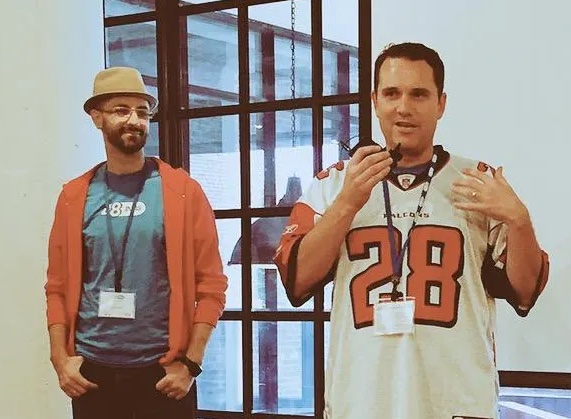Banner ads aren’t dead, in fact they might just be what the doctor ordered
We all know banner ads have a hard time breaking through these days. We all have “banner blindness“, meaning we are to a point now where we don’t even notice most banners on the sites we visit, which is why the most successful banners today are the expandable, video based ones.
Which gets me to my point. Instead of thinking of banners as advertisements, why not start thinking of them as extensions of your website. I’ve long been a proponent that the homepage is dead as people aren’t finding your site *as much* by simply typing in your URL. Instead, they are coming from a variety of sources (search engines, blogs, social networks, emails, Twitter, etc.) and landing on the appropriate place on your site to get the information they need.
If you expand on that concept, you start realizing that not only should you allow people to get quickly to the content on your site from any place they are on the web, in fact people should be able to get your content RIGHT WHERE THEY ARE on the web.
A few examples.
ESPN is an obvious one. Most people go to ESPN.com for a specific purpose. Check on last night’s game, see the top 10 highlights, check upcoming game schedules, etc. Why make them go to the site at all? Oh, right, because they sell ads on that site. Well let’s pretend that doesn’t happen and that ESPN’s #1 goal is to get their content in front of as many people as possible. So why not take that content and start putting it into banner ads on other sites?
Think about it. Heck until Google figures out the racket you’re running, why not buy Google Adwords placements and just promote your content. Anyone searching on Google for basketball shoes that are located in Ohio, throw up a placement with the score from last nights Cav’s game and Lebron’s stats. No one is going to click on it, so you don’t pay anything for the placement, and you’re providing a service to the user. Free extended content!
CNN can do the same thing with their breaking news. They should be using banner ads on other sites and have their tickers running across it, always up-to-date with the latest news. It’s almost as if you’re extending your site to other sites, using the mechanism of online ads to promote your concept.
Digital marketers need to start thinking of the web holistically. Too many of us start and end with our site and our homepage in particular. That’s the wrong way to look at the web today. Instead, leverage the content you have to add value to people’s online experience in the most relevant way possible. And that just might be using space on someone else’s site.



Jeff – nice post. totally agree with this. we started trying to thin this way with our whiteboard site and executions – your examples are mostly publishers, but it works from a brand perspective as well – basically thinking about the site as a kind of collection of landing pages and then the banners as extension of those. with rich media units now, this is more and more possible to push that “site” content or even functionality at times out and allow those banners to function as more targeted homepages or parts of your site (based on the media/vertical you're advertising in) to a particular group. This of course changes the way you think about your measurement as well when you start de-aggregating that site content and pushing out into your ad campaigns.
Interesting Kevin. How did you convince upper management of the benefits of this type of media usage? Was it tough to help them down the path that perhaps it's not all about click-through rates, but more about interaction with the content and exposure to the brand?
i wouldn't say it was tough – then. but the general business climate i think is reducing people's comfort level with some of the “softer” campaign goals. nonethless those goals are still part of what we do – particularly in online brand advertising and sponsorship advertising. anyhow we developed a really simple model that organizes our measures into ad performance, engagement, conversion, and post-conversion, and we kind of score or weight those measures and then plan around them. for some of our campaigns, we actually find that pushing richer content out into the ads can be beneficial to CTR. Of course, we operate in a lower interest category where it can be tougher to engage your audience in any way at all.
i wouldn't say it was tough – then. but the general business climate i think is reducing people's comfort level with some of the “softer” campaign goals. nonethless those goals are still part of what we do – particularly in online brand advertising and sponsorship advertising. anyhow we developed a really simple model that organizes our measures into ad performance, engagement, conversion, and post-conversion, and we kind of score or weight those measures and then plan around them. for some of our campaigns, we actually find that pushing richer content out into the ads can be beneficial to CTR. Of course, we operate in a lower interest category where it can be tougher to engage your audience in any way at all.